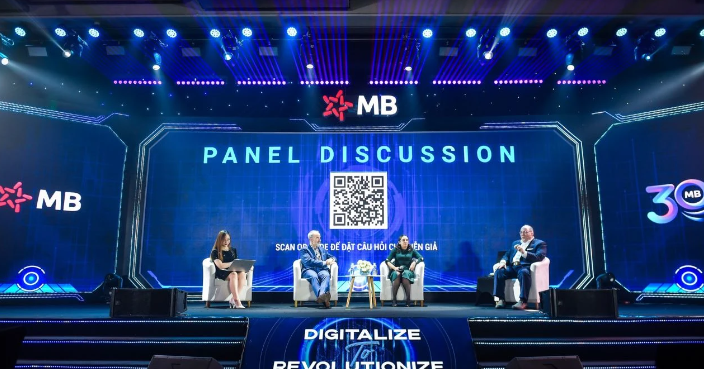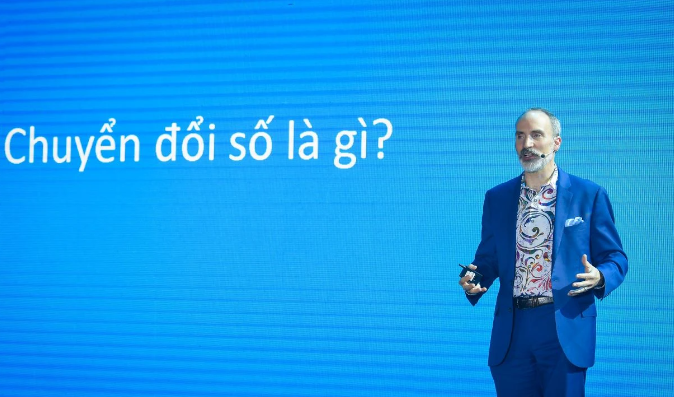Along with the strong development of the digital transformation process, businesses and business leaders need to have a specific mindset and adopt groundbreaking strategies to help the digital transformation process within their own businesses take place in the most effective way, experts told the “Digitalize to Revolutionize - Shaping the Future Digital Economy” seminar organized by MB Bank on November 8.
In attendance were Minister of Information and Communications Nguyen Manh Hung and Mr. Tran Sy Thanh, Chairman of the Hanoi People’s Committee, together with representatives from the State Bank of Vietnam (SBV), various ministries, and leaders of businesses and corporations.

It was part of a long-term plan to bring a methodical approach and practical lessons implemented worldwide to MB Bank and its partners, thereby contributing to the liberation of national resources for the process of building a sustainable digital economy. “From MB Bank’s successful experience in digital transformation, we hope that businesses and organizations can also succeed on the path of digital transformation,” said Mr. Luu Trung Thai, Chairman of the Board of Directors of MB Bank.
“This is why MB Bank decided to organize the international seminar, to connect and disseminate the vision for digital transformation of leading experts in the world and the art of selection from Columbia Business School (US) to organizations and individuals in Vietnam.” he said.
With many years of in-depth research on digital transformation and experience in strategic consulting for the world’s leading corporations, experts shared methods and practical lessons that can be quickly applied in practice in the process of building the national digital economy in general and the digital transformation strategy of each business in particular.

Taking examples in various fields, particularly banking and finance sector, digital transformation expert Professor David L. Rogers said the process is certainly not easy. He cited research showing that 70-80 per cent of digital transformation campaigns at businesses did not yield the desired results. He also identified a group of barriers to the digital transformation process at businesses, including a lack of a common vision, a lack of discipline in setting priorities, a lack of experimentation, inflexibility in management, and lack of growth in capabilities.
Therefore, Mr. Rogers emphasized that digital transformation must be a fusion of two elements: strategy and self-transformation within the organization. “To succeed in digital transformation, special attention must be paid to these two factors,” he said
Similarly, Ms. Sheena Iyengar, a Professor from the Columbia Business School, suggested that individuals, businesses, and organizations need to think “outside of the box” and not follow conventional methods, and at the same time learn and leverage existing knowledge to find new suitable strategies. “Vietnam has great potential for innovation,” she said. “What remains to be done is to create the future and build a system.”
Regarding the digital transformation roadmap, Professor Rogers proposed a roadmap consisting of five steps, including defining a common vision; selecting the most important issues; testing new experiments; managing large-scale growth; and continuous growth in capabilities.
He also spoke of the role of technology in the digital transformation process. “It is essential to clearly define the technological needs of the business and the specific needs of customers,” he said.
Many businesses have focused on technology in the hope of quickly recovering their investment. Businesses also need to create an environment for all employees to develop. “With comprehensive and rapid changes in technology, ideas must be simplified and linked to specific goals,” Professor Rogers said. “In addition, business leaders need to communicate and specify these goals to the entire staff during implementation.”









 Google translate
Google translate